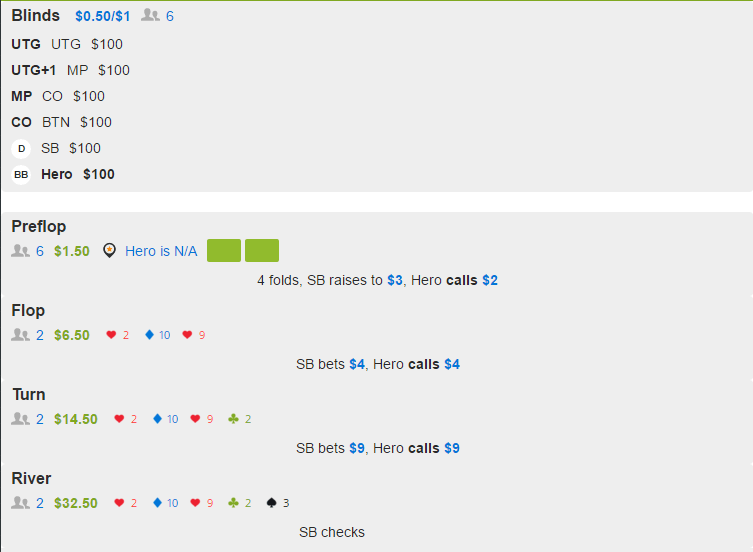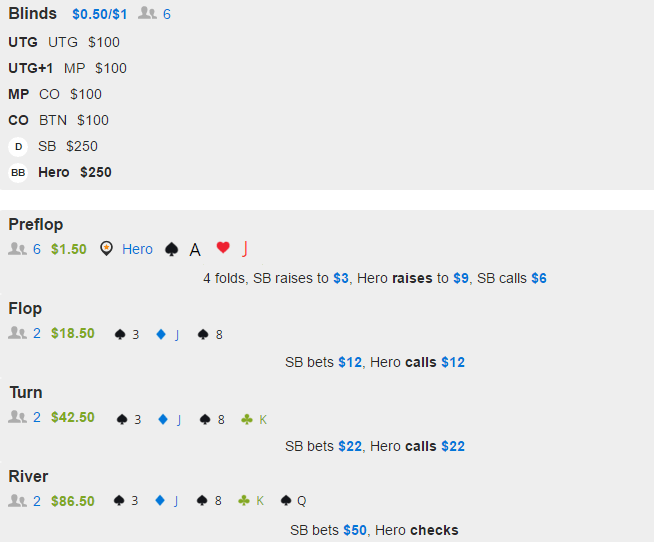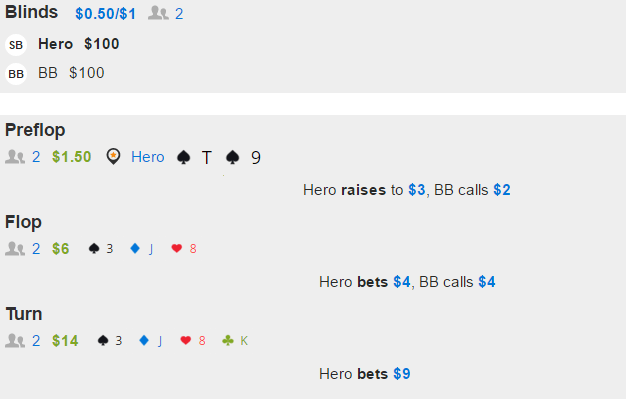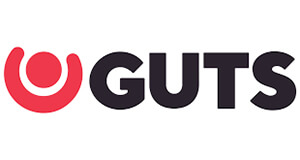How to Bluff Effectively
Knowing how to bluff, when to bluff and which hands to use can be the difference between being a huge winner and a break-even player.
There are two concepts you must understand about bluffing:
- You should bluff with hands that cannot win at showdown
- You should bluff with hands that have drawing equity and/or blocker value
Understanding Showdown Value
An understanding of showdown value is critical to understanding how to bluff. In short, you want to pick spots where you cannot win at showdown. Take the spot below for example:
In this hand, your opponent has barreled the flop and turn into you out of position, and then checked the river.
Imagine you held 6h 7h here. Your flush and straight draws missed, and you find yourself holding 7 high. You can only win by bluffing.
On the other hand, imagine you held Ah 3h. Your draws missed, but you still hold a pair on a board where your opponent was likely barreling a ton of straight draws and flush draws. It makes sense to check behind and take the chance at winning at showdown.
The Value of Blockers
An ideal bluffing hand has blocker value. This means that you hold cards that would otherwise be part of your opponent’s calling range.
Imagine you find yourself in this spot. For now, let’s ignore strategy and simply look at how the cards you hold affect your opponent’s range.
Because you hold on the Ace of spades, there are 9 less possible flush combinations that your opponent can hold (he cannot have As2s – AsKs).
As your opponent cannot hold the nut flush, and you are deep, you have the opportunity to represent the nut flush with a bluff.
You know he cannot hold the nuts because you are blocking it.
Similarly, it’s reasonable that your opponent would lead into you here with a set, like JJ. Because you hold the Jc, and the Jd is on the table, only one out of 6 combinations of JJ (JhJs) is possible.
Likewise, by removing one of four aces, you reduce the number of AT combinations your opponent can hold by 25%. These are hands with which your opponent might call your bluff, otherwise known as bluffcatchers,
As you can see, having AsJx in this spot significantly cuts down on both your opponent’s nut hands and bluffcatchers. Thus, your AsJx has good blocker value.
Semi-bluffing: using equity to your advantage
Semibluffing is the use of drawing hands as bluffs. The advantage here is that if you don’t get a fold you can still improve to the best hand.
The classic types of hands used as semi-bluffs are straight draws, flush draws and overcards.
In the hand below, you are semi-bluffing on the flop with an open-ended straight draw and a backdoor flush draw. Your continuation bet on the turn is a semi-bluff with an open-ended straight draw.
In this situation, you can river any 7 to make the nuts, and any Q makes you the second-nuts. That’s 8 outs.
Conclusion
When considering potential bluffs, look for hands with drawing value, good blocker value, and hands that lack showdown value.
Finally, remember not to bluff too much – some opponents, especially at lower stakes, will just not let go of their hands.
























